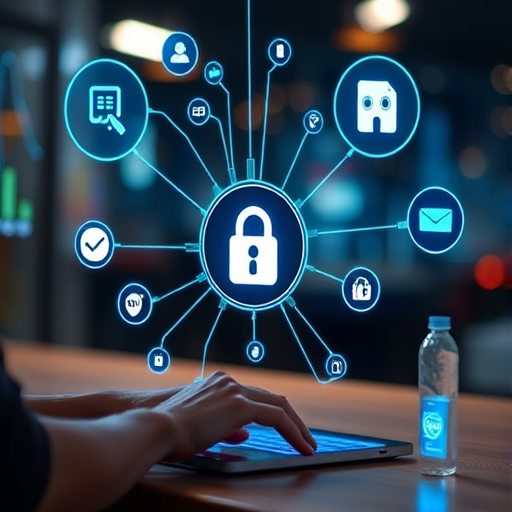The Internet of Things (IoT) refers to the network of physical objects—devices, appliances, vehicles, and more—that are embedded with sensors, software, and connectivity, enabling them to collect and exchange data. IoT is transforming various aspects of daily life by enhancing convenience, efficiency, and connectivity. As more devices become interconnected, the impact of IoT continues to grow across personal, professional, and societal levels. Here’s a look at how IoT is influencing everyday life:
1. Smart Homes and Home Automation
One of the most visible impacts of IoT is in the realm of smart homes. Devices like smart thermostats, lighting systems, security cameras, doorbells, and appliances are connected to the internet, allowing users to control them remotely via smartphones or voice assistants (e.g., Amazon Alexa, Google Assistant).
- Why it matters: IoT makes homes more comfortable, efficient, and secure. For example, smart thermostats learn your temperature preferences and adjust automatically, leading to energy savings. Similarly, smart security systems offer real-time monitoring, enhancing home safety.
2. Improved Healthcare and Wellness
IoT is transforming healthcare by enabling remote monitoring and personalized care. Devices like wearable fitness trackers (e.g., Fitbit, Apple Watch), smartwatches, and even connected medical devices (e.g., glucose monitors, blood pressure cuffs) allow individuals to track their health in real time. Additionally, healthcare providers can remotely monitor patients, offering proactive care and intervention.
- Why it matters: IoT in healthcare improves the quality of care by enabling more accurate data collection, early diagnosis, and personalized treatment plans. It also increases accessibility to healthcare services, especially in remote areas.
3. Connected Vehicles and Smart Transportation
IoT is playing a crucial role in making transportation systems smarter. Connected vehicles can communicate with other vehicles, infrastructure, and traffic management systems to improve safety and efficiency. Features such as real-time traffic updates, autonomous driving capabilities, and predictive maintenance are becoming more common in modern vehicles.
- Why it matters: IoT makes transportation safer and more efficient by reducing traffic congestion, preventing accidents, and improving vehicle performance. The rise of autonomous vehicles, fueled by IoT technologies, could reshape how people travel in the future.
4. Smart Cities and Urban Development
IoT is being leveraged to create smart cities—urban areas that use connected technology to improve public services, reduce waste, and enhance the quality of life. IoT applications in smart cities include intelligent traffic management, waste management, energy-efficient street lighting, and smart water systems that monitor and optimize resources in real time.
- Why it matters: Smart cities improve the sustainability and livability of urban spaces. By optimizing infrastructure and resource management, IoT helps reduce costs, minimize environmental impact, and provide a better standard of living for residents.
5. Retail and Consumer Experience
Retailers are using IoT to enhance the shopping experience for consumers. Smart shelves, connected point-of-sale systems, and inventory management tools help retailers track product availability in real time. Additionally, IoT-enabled apps provide customers with personalized recommendations, promotions, and contactless payment options.
- Why it matters: IoT enhances customer experience by making shopping more personalized and efficient. It allows retailers to optimize inventory, reduce waste, and improve customer service, while consumers benefit from a more seamless, customized shopping experience.
6. Energy Efficiency and Sustainability
IoT plays a significant role in improving energy efficiency both in homes and industries. Smart meters, smart appliances, and energy management systems monitor and optimize energy consumption. In industrial settings, IoT can help track machine efficiency, reduce waste, and optimize supply chains.
- Why it matters: IoT helps individuals and businesses reduce energy consumption, lower costs, and contribute to sustainability efforts. By making it easier to monitor and control energy use, IoT supports environmental conservation goals and promotes greener practices.
7. Agriculture and Food Production
IoT is transforming agriculture by enabling precision farming. Sensors in fields monitor soil conditions, temperature, humidity, and crop health, providing farmers with valuable data to optimize irrigation, fertilization, and pest control. IoT also aids in tracking livestock health and managing supply chains for food production.
- Why it matters: IoT in agriculture increases productivity, reduces waste, and helps ensure more sustainable farming practices. It also helps improve food safety by tracking products from farm to table, reducing the risk of contamination.
8. Workplace and Industrial Automation
IoT is driving automation in industries by connecting machinery, sensors, and devices to streamline operations. IoT systems in factories monitor machine performance, detect faults before they cause downtime, and track supply chains and inventories. In offices, IoT-enabled smart devices help with building management, such as controlling lighting, heating, and air conditioning based on occupancy.
- Why it matters: IoT enables higher efficiency, lower operational costs, and improved productivity in both manufacturing and office environments. Automation reduces human error and ensures smoother, faster operations across industries.
9. Enhanced Personal Safety and Security
IoT is helping improve personal safety through connected devices. Smart security systems, wearable emergency buttons, and location-tracking devices are just a few examples of IoT technologies that enhance safety. For example, smart security cameras can send alerts when motion is detected, and connected wearables can alert emergency services in case of an accident.
- Why it matters: IoT provides peace of mind by enhancing personal security. Real-time monitoring and alert systems offer quicker responses to emergencies, helping protect individuals and their property.
10. Environmental Monitoring and Disaster Management
IoT is being used for environmental monitoring, enabling real-time data collection on air quality, water levels, temperature, and other environmental factors. This data helps track pollution levels, predict natural disasters like floods or wildfires, and monitor climate change.
- Why it matters: IoT can improve response times to environmental disasters, mitigate damage, and help policymakers make informed decisions regarding public health and safety. It also empowers individuals and communities to take action against environmental challenges.
11. Supply Chain and Logistics
IoT is revolutionizing supply chain management by providing real-time tracking of goods as they move from suppliers to consumers. RFID tags, GPS sensors, and smart containers allow businesses to monitor product location, condition, and movement. This data enhances inventory management, reduces waste, and improves delivery efficiency.
- Why it matters: IoT increases transparency, reduces operational costs, and optimizes delivery schedules in supply chains. It enables businesses to respond more quickly to market demands and improve customer satisfaction.
12. Home and Workplace Health Monitoring
In addition to healthcare wearables, IoT devices are being used to monitor air quality, temperature, and noise levels in homes and workplaces to improve health and well-being. For example, air purifiers, humidity sensors, and CO2 monitors ensure a healthier living and working environment.
- Why it matters: IoT can enhance quality of life by providing a healthier living and working environment. It also offers the ability to track and manage health factors that might otherwise go unnoticed.





